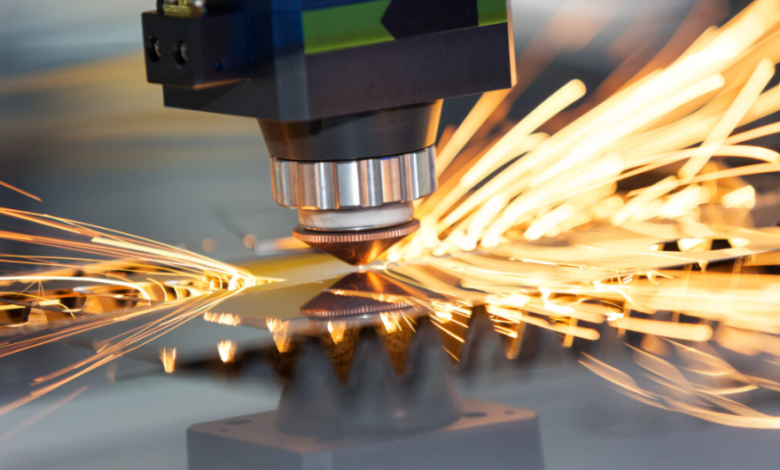Choosing the Right CNC Machining Materials for Manufacturing

Introduction to CNC Machining
CNC machining has become a cornerstone of modern manufacturing, allowing businesses to produce complex and precise components efficiently. One critical factor that influences the success of CNC processes is the selection of appropriate materials. The right material ensures durability, accuracy, and suitability for the intended application. Understanding the properties of various CNC machining materials can help engineers and manufacturers make informed choices for different projects.
Categories of CNC Machining Materials
CNC machining materials can be broadly divided into metals, plastics, and composites. Each category offers distinct advantages depending on the design requirements and operational environment.
Metal Materials
Metals are commonly used due to their high strength, thermal resistance, and longevity. Popular choices include:
- Aluminum: Lightweight, corrosion-resistant, and easy to machine, aluminum is widely used in aerospace, automotive, and electronics industries.
- Stainless Steel: Offers exceptional strength and resistance to rust, making it ideal for medical devices, food processing equipment, and structural components.
- Brass: Known for its corrosion resistance and electrical conductivity, brass is often chosen for fittings, decorative parts, and precision instruments.
- Titanium: Titanium combines high strength with low weight and is used extensively in aerospace, medical implants, and performance vehicles.
Plastic Materials
Plastic materials are selected when weight reduction, electrical insulation, or chemical resistance is required. Common examples include:
- Acrylic: Transparent and easy to machine, acrylic is used for displays, signage, and protective covers.
- Nylon: Offers good wear resistance and strength, suitable for gears, bushings, and functional parts.
- Polycarbonate: Known for its impact resistance, polycarbonate is used in safety equipment, electronic housings, and lenses.
- Acetal (Delrin): Offers dimensional stability and low friction, making it suitable for precision mechanical components.
Composite Materials
Composite CNC machining materials combine the properties of two or more substances, often to achieve higher strength-to-weight ratios. Carbon fiber reinforced plastics and fiberglass are examples, frequently used in aerospace, automotive, and sporting goods for their lightweight and durable properties.
Key Factors in Material Selection
Choosing the right CNC machining materials requires considering mechanical properties, machinability, thermal stability, and cost.
Mechanical Properties
Strength, hardness, and flexibility are crucial to ensure that the machined component can withstand operational stress. Metals like titanium and stainless steel are ideal for high-strength applications, while plastics such as nylon provide flexibility and impact resistance.
Machinability
The ease with which a material can be cut or shaped affects production time and tool wear. Aluminum and brass are highly machinable, whereas harder metals like titanium require specialized tools and cutting techniques.
Thermal and Chemical Resistance
Materials exposed to high temperatures or corrosive chemicals must maintain their structural integrity. Stainless steel and polycarbonate are preferred in environments where thermal stability and chemical resistance are essential.
Cost and Availability
Budget considerations often influence material selection. While titanium offers superior performance, its high cost may not justify its use in every project. Balancing performance with cost ensures efficient manufacturing without compromising quality.
See also: Redefining Tech Hiring Efficiency with Technical Interview as a Service Solutions
Advantages of Selecting Appropriate Materials
Using high-quality CNC machining materials offers multiple benefits:
- Enhanced Precision: Consistent material properties reduce deformation during machining, resulting in accurate components.
- Durability: High-strength and wear-resistant materials extend component life and reduce maintenance costs.
- Versatility: Quality materials allow for complex designs that might be challenging with less suitable options.
- Cost Efficiency: Although premium materials may have higher upfront costs, reduced machining time and longer-lasting products often result in overall savings.
Applications Across Industries
CNC machining materials are used in various sectors, each requiring specific material properties.
Aerospace Industry
Lightweight metals like aluminum and titanium are commonly used for aircraft components due to their excellent strength-to-weight ratio. Components such as structural frames, engine parts, and landing gear benefit from these materials.
Automotive Industry
Metals and high-performance plastics are used in engine components, transmission systems, and interior fittings. High-strength steel and aluminum alloys are preferred to withstand mechanical stress and environmental conditions.
Medical Industry
Biocompatible metals such as titanium and surgical-grade stainless steel are used for implants, surgical instruments, and prosthetic devices. Plastics like polycarbonate and Delrin are used in medical device housings and equipment.
Electronics and Technology
Lightweight metals and plastics are ideal for electronic housings, connectors, and heat sinks. Thermal conductivity and electrical insulation properties are key considerations in material selection for electronic components.
Emerging Trends in CNC Machining Materials
Manufacturing demands continue to evolve, pushing the development of new materials:
- Advanced Alloys: Metals engineered for superior strength, corrosion resistance, and machinability.
- Reinforced Composites: Use of carbon fiber and fiberglass for lightweight, durable components.
- Eco-friendly Plastics: Sustainable plastics are being developed to reduce industrial waste.
- Smart Materials: Materials that respond to environmental changes, enhancing the functionality of components.
Conclusion
The selection of CNC machining materials is a critical factor in producing precise, durable, and cost-effective components. Metals, plastics, and composites each bring unique advantages to different applications. By understanding the properties and applications of these materials, manufacturers can optimize their processes and achieve higher-quality results. As technology advances, the range of materials continues to expand, enabling innovation and efficiency in modern CNC machining practices.







